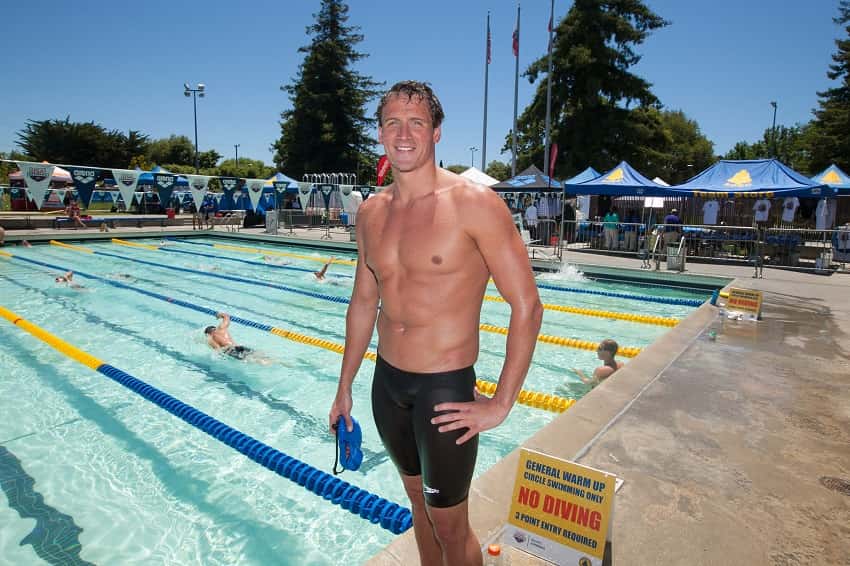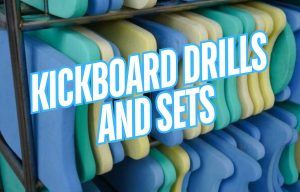
How to Use a Drag Chute for Faster Swimming
Looking for tips on how to use a drag chute for improved swim performances? Read on for some proven tips, sets, and pointers for training with a chute.

Ryan Lochte is no stranger to hard work in the pool.
From his high yardage weeks under Gregg Troy at the University of Florida (where he did this particularly “brutal” IM set), to his high quality training with Dave Marsh, to his well-documented forays into Strongman training, Lochte has developed a work ethic that has reached legendary status.
But as anybody who has tried to excel in the sport knows, it’s about more than just effort.
During a week-long training visit in 2012 Guelph Marlins Head Coach Don Burton took his swimmer Andrew Ford to swim with Lochte and Coach Troy in Florida.
Burton reported back after the trip and some of the notes he made of Lochte’s overall training (and the overall atmosphere at the University of Florida, which is reflected in more recent world class swimming from sprinter Caeleb Dressel in the 50 yard freestyle) that helped shed light on the way that Lochte handles training.
More than just the long meters and high quality efforts, Lochte also swims with a high degree of intention.
Showing that it’s not enough to work hard.
You have to train with a focus on the details as well.
While Burton had glowing words in general for the way Troy runs his program, he had a lot of praise for Lochte.
After all, Lochte’s training habits were described as a coach’s dream:
If you checked out the “brutal” IM set that was posted recently you know that Lochte can perform at the tail-end of the 6,000m workouts. He was able to belt out four 400IM’s in the 4:20s, showing that regardless of how much yardage you are doing in the water it is still possible to swim fast.
This was no exception during the week that Burton was there.
On the Saturday, after 8 previous sessions in the pool, plus three rounds in the gym and three 1-hour dryland sessions they did a get-up-and-race set.
The set was (painfully) simple:
6 x 100 @ 6 minutes from a dive, all out.
Lochte did a mixed bag of strokes, and dropped some unbelievable times.
Here is how he did:
Swimmers too often believe that because they are doing high yardage that they cannot also summon speed from themselves. Or that because the set they are doing is high effort that the details can be glossed over.
Athletes like Ryan Lochte show that if you are serious about being and beating the best it’s not a case of one or the other…
You gotta do both.
Burton summed up the week of training, and what it takes to excel at the international level, quite nicely:
“Anyone can do it. You have to want it this bad, every day. Pay attention to all the small details while working hard.”

Olivier Poirier-Leroy Olivier Poirier-Leroy is the founder of YourSwimLog.com. He is an author, former national level swimmer, two-time Olympic Trials qualifier, and swim coach.
✅ Free shipping on Orders over $49
✅ Price Match Guarantee
✅ Best selection of gear for training and competition
✅ Fast and Easy Returns

“This is the best book I have ever seen concerning mental training.” — Ray Benecki, Head Coach, The FISH Swim Team


Looking for tips on how to use a drag chute for improved swim performances? Read on for some proven tips, sets, and pointers for training with a chute.

Ready to take your swimming to the next level? Here are seven ways that a drag chute can help you become a better and faster swimmer.

Wondering if a swim bench can help improve your swimming? Here are six benefits of swim benches for better technique, more power, and faster swimming.

Not breathing into the walls is one of the fundamental skills developing swimmers are taught. Here is how powerful a no-breath approach is for turn and swim speed. Strong training habits are something swimmers hear a lot about from their earliest days of their competitive swimming careers. The greatest hits

Drills with a swim snorkel are one of the best ways to maximize engagement and skill development. Here are five swim snorkel drills to try for faster swimming.

Looking to add some flavor to your kick sets and workouts? Here are some kickboard drills swimmers can use for faster swimming.
SITE
SHOP
GUIDES

LANE 6 PUBLISHING LLC © 2012-2025
Join 33,000+ swimmers and swim coaches learning what it takes to swim faster.
Technique tips, training research, mental training skills, and lessons and advice from the best swimmers and coaches on the planet.
No Spam, Ever. Unsubscribe anytime.
